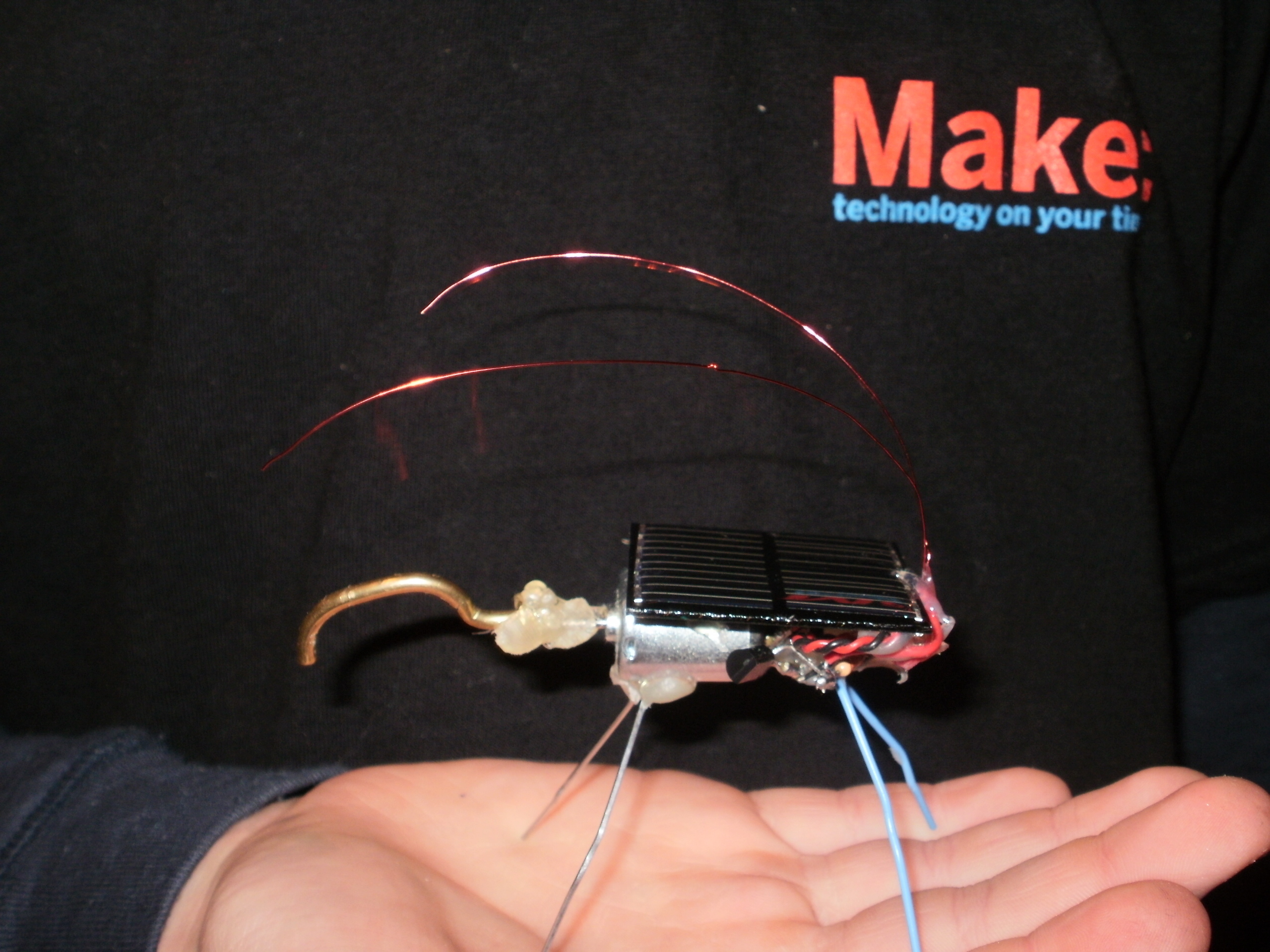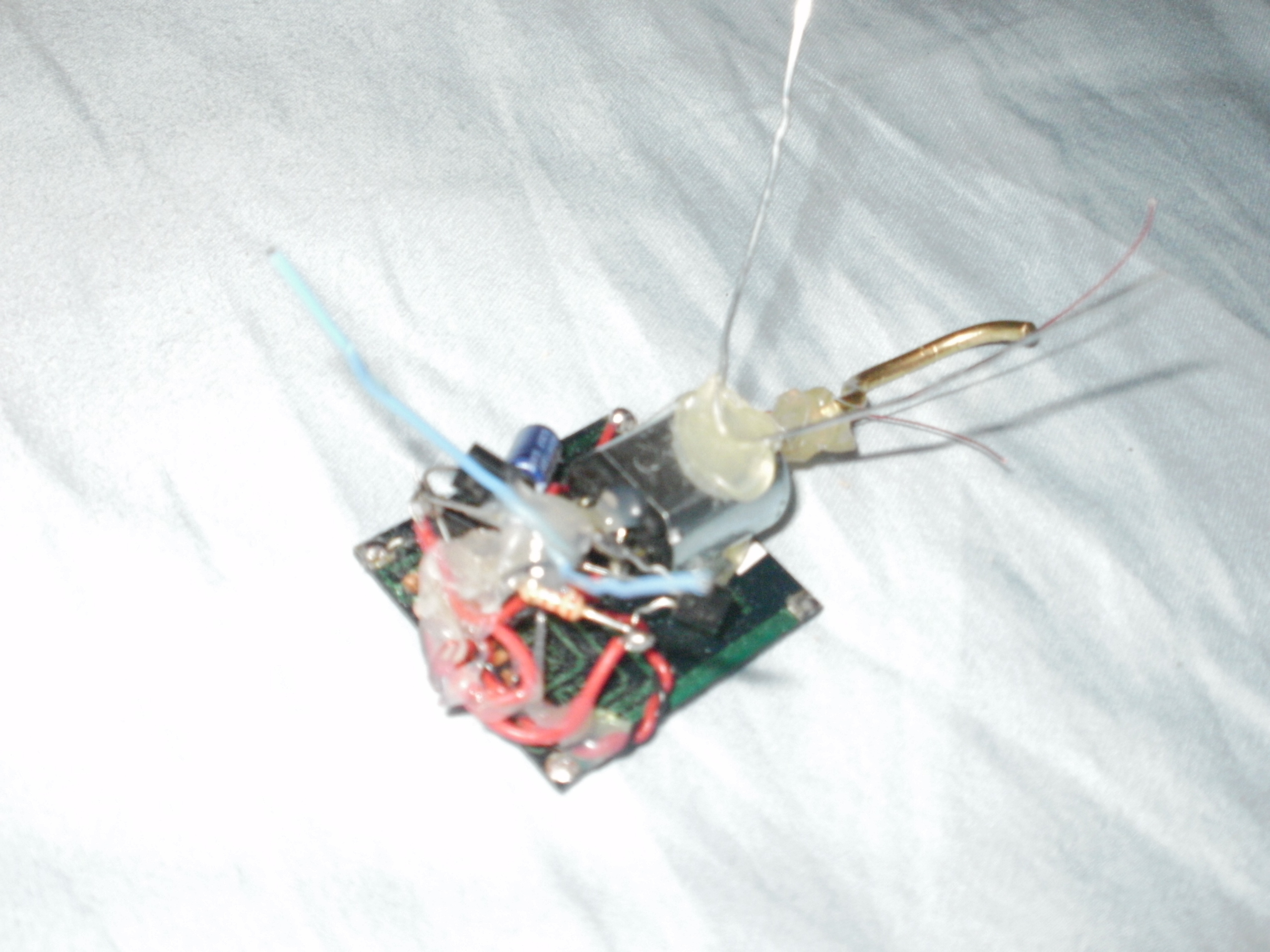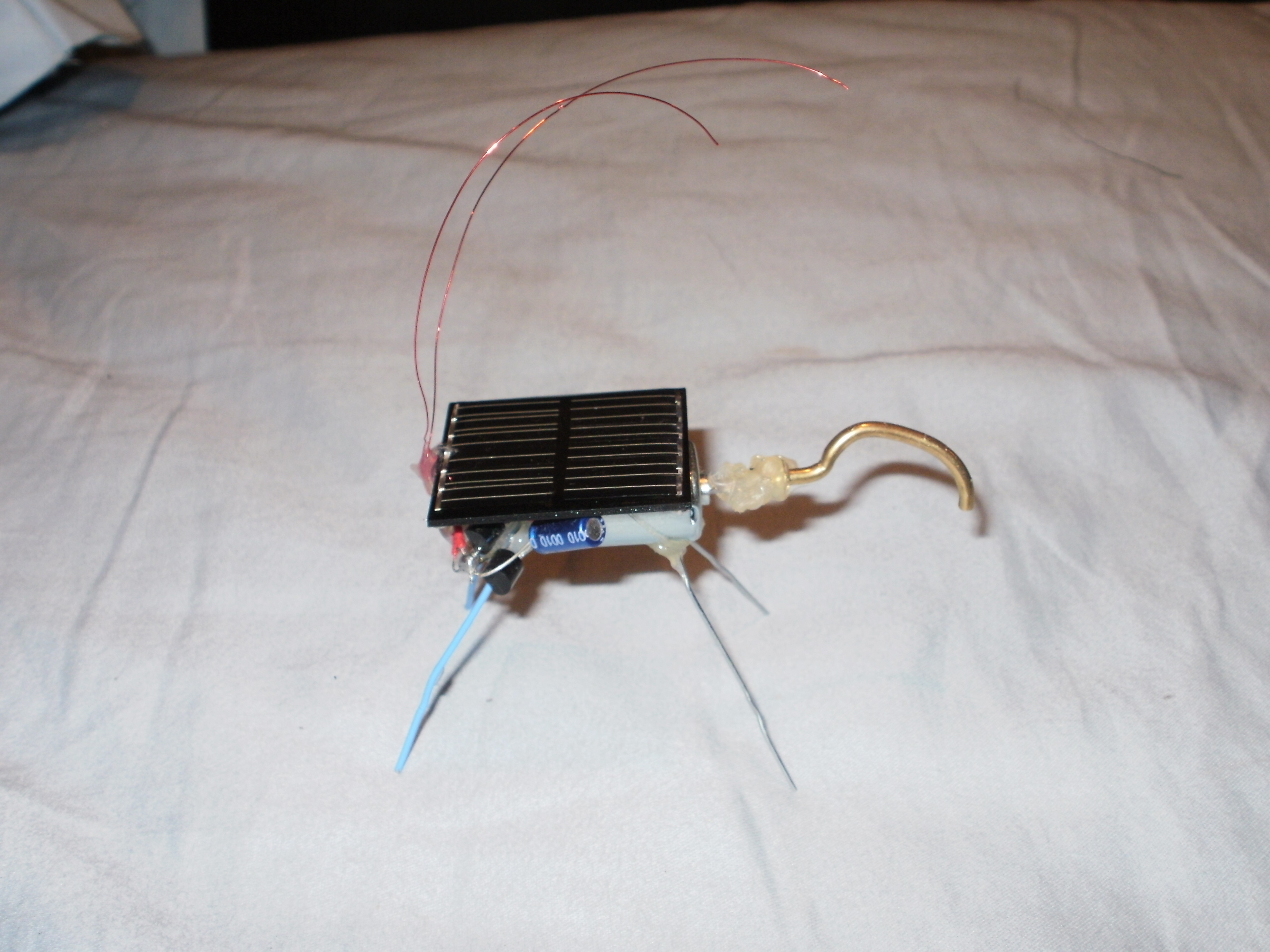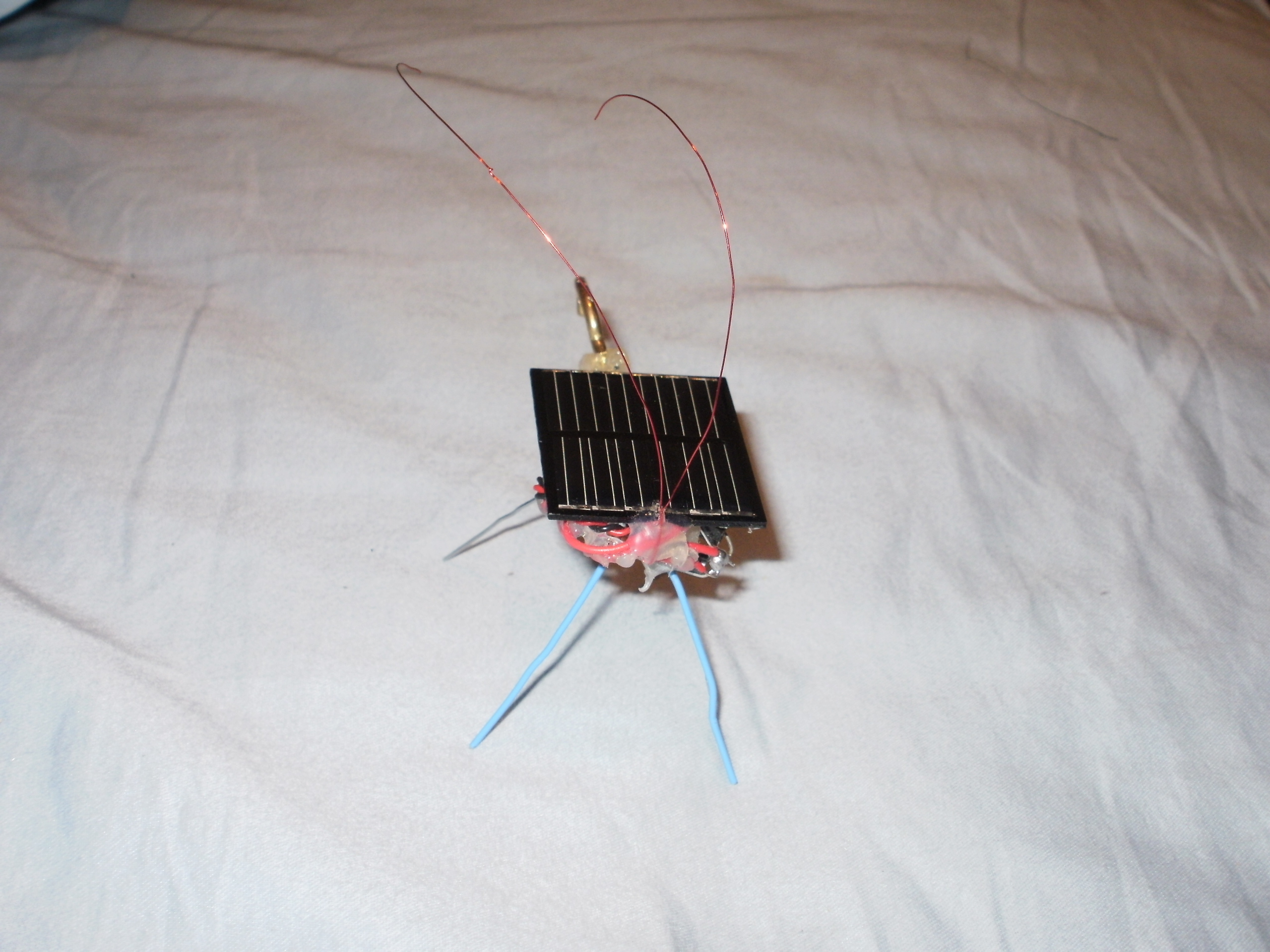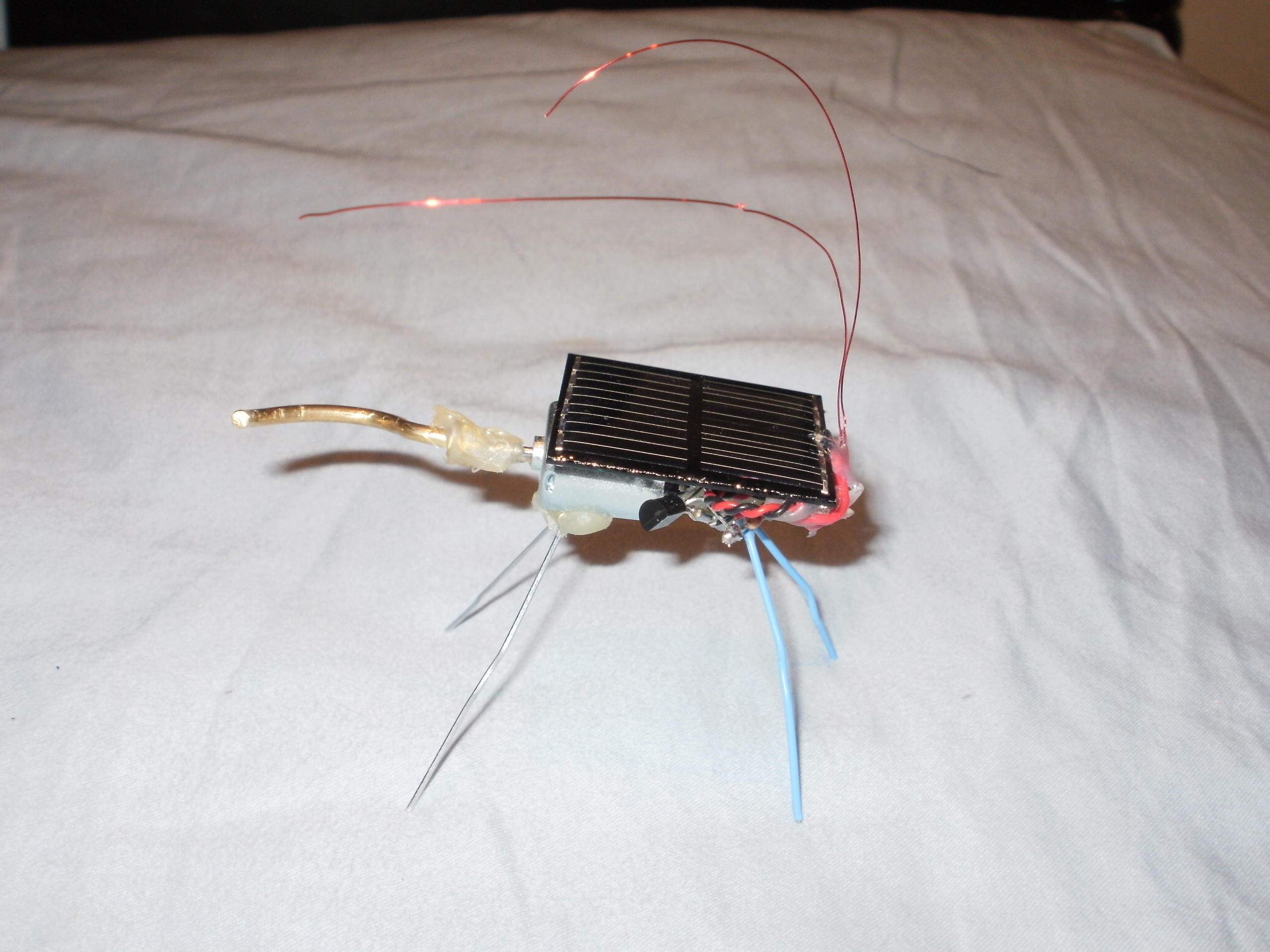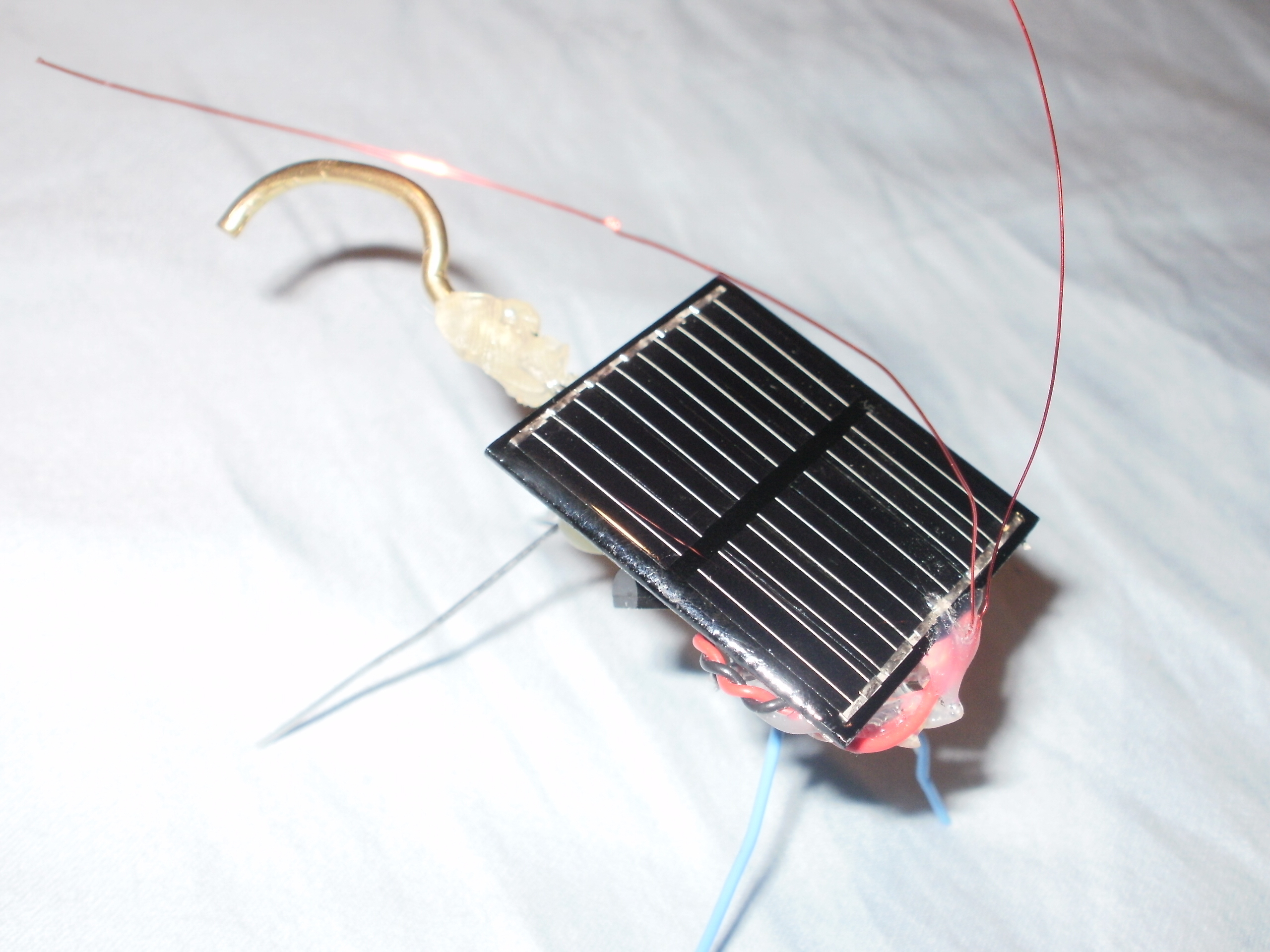We’ll be freeforming this circuit, which means connecting components together directly, without a board. Parts are easily desoldered and resoldered if there’s a problem.
Face the two transistors up with their pins toward each other. Solder the base pin (middle) of the 3904 transistor to the collector pin of the 3906 (the right pin, as you read the printing).
Use needlenose pliers to gently bend the 3904 emitter pin (left) 90 degrees to the side and its collector (right) 90 degrees up. Bend the 3906 base pin (middle) 90 degrees up and its emitter (left) 90 degrees to the side. Solder the 2.2k resistor from the 3904 collector to the 3906 base.
Trim excess lead length from previous step. Place the 1381 voltage trigger to the right of the 3906, facing the same way. Solder its Pin 3 (right) to the 3904 emitter and its Pin 1 (left) to the 3906 collector. Finally, arc its Pin 2 (middle) around and solder it to the 3906 emitter (left). There’s your basic circuit, ready for motor and power!
